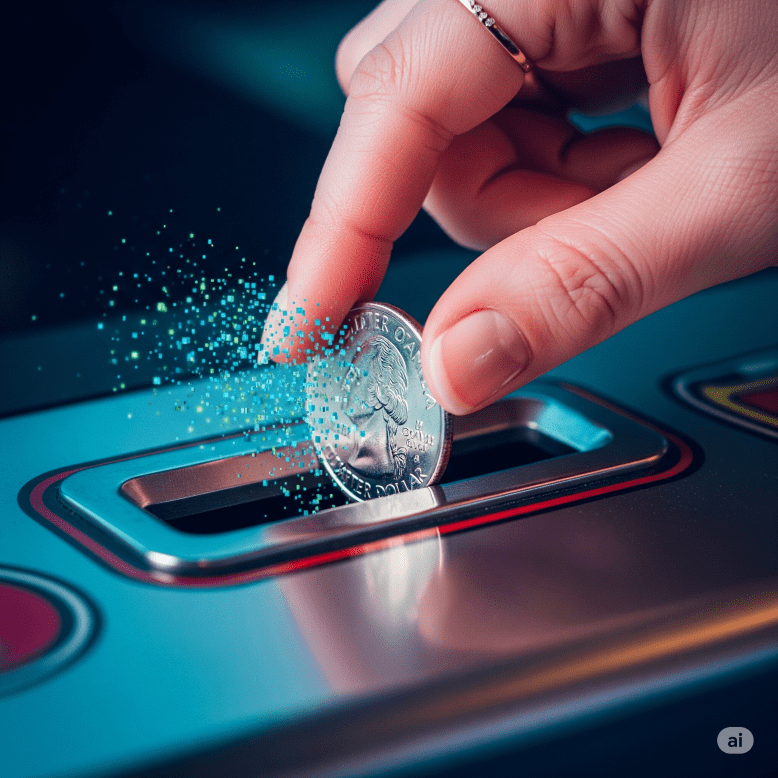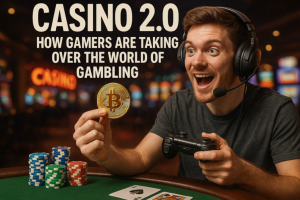For anyone who grew up in the golden age of arcades, the sound is unforgettable. The metallic slide and satisfying clunk of a token dropping into a quarter slot was the definitive start to any gaming session. This physical transaction was the heart of the arcade experience, a direct exchange of a coin for a chance at glory. Today, that tangible ritual has been almost entirely replaced by the abstract, flowing economies of virtual coins.
To help players navigate these new digital systems, many platforms provide educational entry points. A welcome bonus, or an offer found with a High 5 Casino promo code, often functions as a tutorial by granting a starting balance of virtual coins. This allows a new user to experiment with game mechanics and learn the value of different digital assets without any initial commitment, easing the transition from the simple quarter slot model.
The Era of the Physical Token
The classic arcade was built on a simple, brilliant concept. The quarter slot was the gatekeeper to every experience. It did not just take your money; it framed the game itself. One coin equaled one attempt, three lives, or a finite amount of playtime. This created a powerful sense of value for each session.
Whether you were playing Pac-Man, Donkey Kong, or a pinball machine, the physical act of inserting another coin was a conscious decision to continue. This pay-per-play model defined gaming for decades, creating a direct and easily understood relationship between the player’s wallet and the time spent playing.
Early Steps into Digital Currency
The idea of a purely digital economy in gaming did not appear overnight. It evolved slowly, moving from high scores to more complex systems. The actual shift began with the rise of early online role-playing games. This marked a clear progression away from the arcade model.
- High Scores: The earliest form of digital value, representing skill but having no utility.
- In-Game Points: Points in home console games that could sometimes be “spent” on extra lives or continues.
- MMO Gold: Massively Multiplayer Online games like EverQuest and World of Warcraft created entire economies where players could earn, trade, and spend digital gold on armor, weapons, and services. This normalized the idea of virtual coins having real utility within a game world.

The Free-to-Play Revolution
The model that truly replaced the quarter slot on a massive scale was “free-to-play.” Popularized by mobile and social games in the late 2000s, this approach inverted the classic arcade formula. Instead of demanding payment upfront, it offered the core game for free to attract the largest possible audience.
The monetization was then built around optional purchases of virtual coins or other in-game goods. This removed the barrier to entry entirely. Social casinos are a prime example of this model’s success, offering a full suite of casino-style games without ever requiring a payment to play.
How Modern Virtual Coins Function
Today’s virtual coin systems are far more complex than the simple quarter slot. In many social casino and free-to-play games, there are often two types of currency. The standard virtual coins are the workhorse currency, earned through gameplay, daily bonuses, and social activities. They are used for regular play.A second, premium-style currency is often used for special features or promotions. This dual-currency approach creates a layered economy that encourages daily logins and community participation, as opposed to the pay-per-play pressure of the classic arcade. The goal is to keep you playing through a steady stream of free virtual coins, a world away from scrounging for one last quarter.






 Your total news and information resource for all things Science, Technology, Engineering / Mathematics, Art, and Medicine / Health.
Your total news and information resource for all things Science, Technology, Engineering / Mathematics, Art, and Medicine / Health.
Leave a Comment